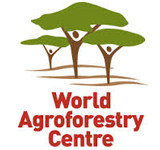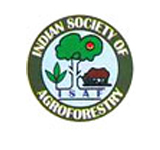
Vigyan Bhavan & Kempinski Ambience
10 - 14 February 2014
Delhi, India
blog

Landscape in Tanzania. Photo by Paul Stapleton/ICRAF
In order to realize implementation of a landscape approach, a dynamic combination and interaction of factors is involved. At a Landscape session during the World Congress on Agroforestry, discussions focused on key areas involving actual implementing case studies, need forsynergies between mitigation and adaptation in policy, innovative community-driven institutional platforms, and governance.
A comparative study looking at 191 Integrated Landscape Initiatives in Latin America and Africa showed that while in both regions the motivation for adopting landscape approach are sustainable environmental protection, enhancing food security and agricultural productivity; in Latin America, where the practice has been conducted for a longer time than Africa, incentives go further to include reducing negative agriculture impacts.
In both places, the initiative involves stakeholder groups, government, producers, marginalized groups and non-governmental organizations inside and outside the landscape. Groups studied cited tangible outcomes including improved skills and governance structures as success factors and lack of funding, proper infrastructure, proper policies, government and private sector involvement as challenges to a landscape approach.
In Sri Lanka, effort is underway to reclaim degraded land where forest has been cleared for tea and coffee farming since the 1800s. Challenges to deal with currently as the project is implemented include quick win commercial ventures and lack of native planting material.
When looking at policy frameworks that implement a landscape approach, emphasis was made on the need to synergize mitigation and adaptation as opposed to looking at the two streams separately. The example of environmental service in Suba, Ethiopia was used to illustrate the domino effect between the two approaches. For instance, failure to adapt to drought and flooding in the region creates a knock on effect on mitigation as communities are forced to move into productive forest areas where they clear the forest for increased farm productivity. On the other hand, failure to mitigate leads to high carbon emissions that in turn lead to either drought or flooding, making it harder to adapt. To synergize, multifunctional landscape level actions are needed.
In Eastern Uganda, innovation platforms that comprise ‘multi-stakeholder arrangements, innovation networks, coalitions or public-private partnerships’ have been adopted as institutional frameworks to foster community cohesion and collective action; yielding positive effects of increased livestock, tree cover and raised income levels.
In Mexico, a pilot study is testing the use of agroforestry as a conservation measure in protected areas, which would require reforms in political administration and land tenure for the most part.
To provide governance structures that are manageable, one presentation showed innovative territorial governance known as The Model Forest Landscape Approach as it is being carried out in 5 countries across six regions. Benefits of this particular innovation at a landscape level have provided resilient social infrastructure, effective experimentation, demonstration and practical knowledge sharing tools. It has also promoted regional dialogue as well as public – private partnerships and growth of local business.
Ensuing discussions at the session made it clear that the feasibility of landscape approaches largely hinge on favorable policy frameworks driven by political will and active involvement of all stakeholders; including specific targeting of the private sector, a move that has potential to inject new innovation and funding.
By Elizabeth Kahurani
Communications Manager, Environmental Services & ASB Partnership for the Tropical Forest Margins
Related links:
Landscape approach allows business to share risks and benefit





